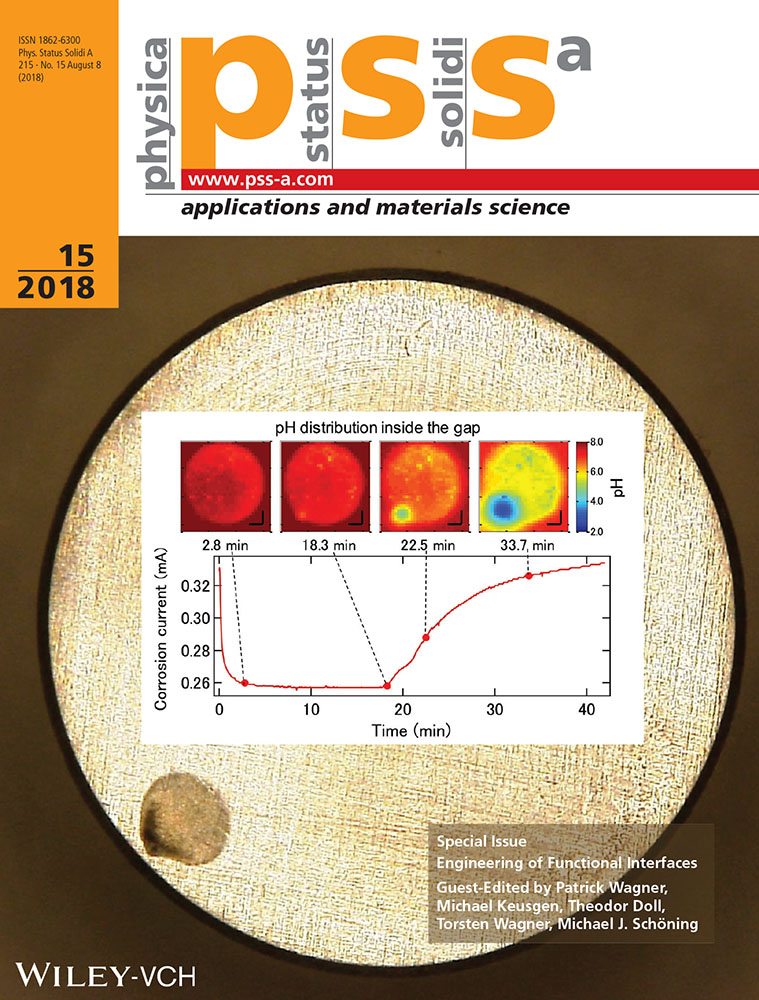A Partially Etched Structure of Light-Addressable Potentiometric Sensor for High-Spatial-Resolution and High-Speed Chemical Imaging
Abstract
In this study, a partially etched structure of a light-addressable potentiometric sensor (LAPS) is fabricated for high-spatial-resolution and high-speed imaging of chemical species. An anisotropic etching process based on tetramethylammonium hydroxide (TMAH) is optimized to fabricate the structure, which strikes a balance between the imaging performance and the mechanical strength of the sensor plate. The etched region of the sensor plate with a thickness of 47 µm yields a 12-fold enhancement of the photocurrent signal at a high frequency of 120 kHz and a 10-fold frequency bandwidth in comparison with the frame region with a thickness of 150 µm due to the reduced traveling distance of charge carriers inside the semiconductor. This result represents a new approach for high signal-to-noise ratio, high-spatial-resolution, and high-speed measurement.
Conflict of Interest
The authors declare no conflict of interest.




